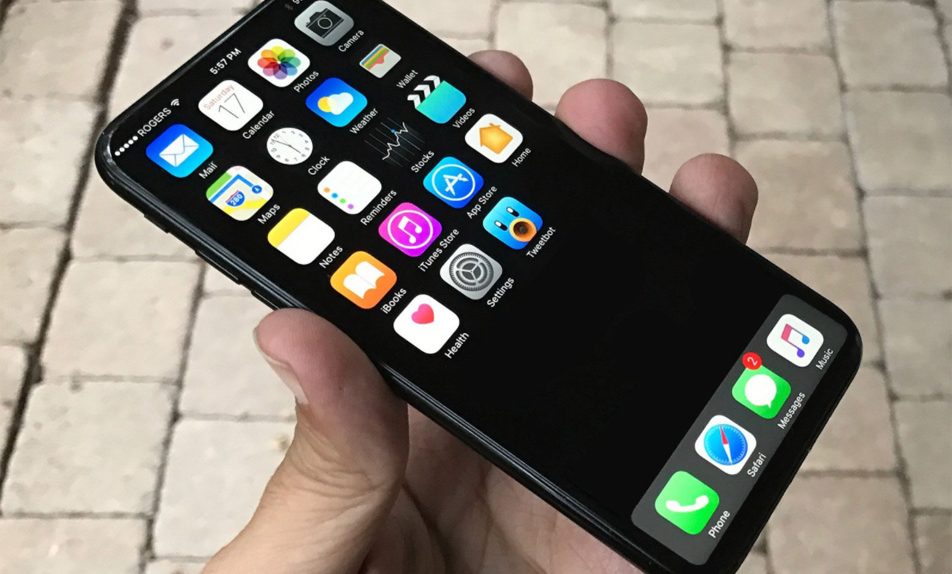Apple’s next-generation iPhone 8 won’t be unveiled for another eight months, give or take. By that time, however, we’ll already know practically everything there is to know about the exciting new smartphone. Try though it might to keep upcoming iPhones a secret, Apple’s supply chain is far too vast to keep the development of its upcoming devices under wraps. In fact, iPhone 8 leaks already began to trickle out even before Apple unveiled the iPhone 7 this past September.
We’ve read plenty so far about the iPhone 8, which will reportedly feature a bold new design, in part to celebrate the tenth anniversary of the original iPhone’s release. Beyond the handset’s external design, there have also been rumblings of a few exciting new features that may be headed to this year’s new iPhone. Unfortunately, a new in-depth analysis suggests one of the upcoming phone’s most hotly anticipated features may be a pipe dream.
Apple’s new iPhones are always among the most exciting new smartphones to debut each year, but this year’s iPhone 8 is shaping up to be something special. Rumors suggest that Apple is moving back to a design that features a glass front and back with stainless steel around the edges. In fact, new concept renders published just this morning envisioned what Apple’s sleek new iPhone 8 might look like.
It might seem odd that Apple would go back to a design similar to the one it used on the iPhone 4 and iPhone 5, because the company has since adopted more sturdy constructions that use metal housings. But there is a logic to the shift: according to rumors, Apple’s next-generation iPhone will finally add support for wireless charging.
The specific type of wireless charging Apple has planned is the subject of much controversy.
Nearly a year ago, BGR first wrote about mounting evidence that Apple could be working with a company called Energous (NASDAQ:WATT) to add long-range wireless charging to future products. We had seen demonstration of the exciting new technology a month earlier at CES 2016. Rather than using inductive wireless charging that requires a device to be placed on a charging pad, Energous’ base stations are capable of charging compatible devices at a distance. For the time being, that distance is only a few inches, but longer-range base stations with a range of 15 feet or even farther are expected to be released by the end of the year.
But will this technology be included in Apple’s upcoming new iPhone 8? According to a new report published on Monday, the answer is no.
The anonymous equity researcher or researchers at Copperfield Research have published an in-depth analysis that casts doubt on speculation that Apple and Energous are in cahoots. Like the initial rumors themselves, Copperfield’s report is also speculative and includes no firm evidence. In fact, there’s still no firm evidence at all, one way or the other.
“Thus far, the bull/bear case has been ‘Apple hope’ vs. factual red flags,” Copperfield wrote in its report. “Retail investors have extrapolated a series of developments to conclude WATT will win an iPhone design: Energous hiring former Apple employees, the Dialog investment, a [misleading] reference to Apple in SEC filings from 2014, and extreme secrecy about the ‘Tier 1’ consumer partner. Stock promoters and investment websites have speculated that these ‘dots’ must be connected. Bears have raised meaningful red flags, including: the bankruptcy fiasco of CTO Leabman’s prior whiz-bang company Wi-Sky (listed in Germany), WATT’s repeated failure to hit revenue milestones, meet commercial launch promises and certification targets (consistent with other MDB Capital IPOs), the closed door UL certification, and basic laws of physics that prevent WATT’s RF charging within the allowable FCC power thresholds (Bears have yet to discuss ‘neighborly’ institutional investments or the background behind Dialog/Tyndall’s ‘option’).”
The report goes on to identify three main reasons that speculation surrounding Energous’ work with Apple is baseless.
First, a number of patents related to wireless charging technology filed by Apple in recent years cover inductive wireless charging. Inductive wireless charging is the same technology seen today in a number of widely available products, and it uses magnets to transfer energy. Energous, meanwhile, uses RF waves to transfer power. While some of the Apple patents referenced in the report are several years old, one was published as recently as this past December.
Second, the report notes a statement made by one of Apple’s suppliers (IDTI), which says that Apple plans to use in-house technology for the iPhone’s wireless charging solution. While this claim hasn’t been confirmed by Apple, IDTI would likely have knowledge of Apple’s intentions in this area. Apple also likes to use in-house tech whenever possible, so logic is certainly on IDTI’s side.
“WATT’s retail investor base seems complacently unaware that IDTI, the dominant supplier of inductive wireless charging chips for Samsung Galaxy phones and Apple Watches, has stated Apple will use an internal solution for iPhone wireless charging. Considering IDTI’s incumbent merchant position at Samsung and Apple, it would seem logical IDTI has unique insight into Apple’s wireless charging roadmap,” the report says. “IDTI’s management has provided concise and specific opinions about Apple’s roadmap that are wholly inconsistent with the WATT bull thesis.”
Finally, Copperfield references one particular Apple patent in which Apple engineers discuss RF wireless charging technology and describe it as “inefficient,” “complicated,” and “hazardous.” This certainly appears damning, though it’s important to note that the patent in question was filed before Energous debuted its technology. As such, it is unclear if the concerns held by Apple scientists at that time also apply to Energous’ newer solution.
Copperfield Research’s full report is embedded below.








